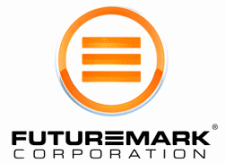
Introduction
DFI keeps rolling out board after board with such abandon these days. With such hits as the P45 DK series under their belt, one can only wonder how they are going to approach the UT version of this chipset.
As much of the enthusiast community is aware, the x58 series of system boards are already available on the internet. The X58/Core I7 provides a much more efficient solution compared to the core 2 range, however it comes at a heavy price to your wallet. For those who cannot afford to purchase a brand new board, RAM and CPU then just upgrading the system board might be a tempting offer. DFI is one of the many companies that have provided you with a solution to do just that. DFI produces a range of boards that appeal to a wide range of people.
-
DFI UT: Hardcore Over Clocking/Performance
-
DFI DK: Over Clocking/Gaming
-
DFI Blood Iron: Gaming
-
DFI JR: Performance Micro ATX Solutions
Diamond Flower International (DFI) has produced a great deal of motherboards, each system board displays a myriad of BIOS options, which (depending on the users view point) either overwhelms you with the amount of over clocking options or are a logical series of progressive steps which flow like a spring into a river.
In this review, (the first of a series of ‘progressive’ reviews) the DFI LP UT P45 T2RS will be explored…
So let us take a trip once again into the universe called DFI!
DFI LP UT P45 T2RS Motherboard Specifications
| CPU | LGA 775 socket for: – Intel® Core2 Quad and Intel® Core2 Duo Supports Intel Enhanced Memory 64 Technology (EMT64T) Supports Enhanced Intel SpeedStep Technology (EIST) Supports Intel Hyper-Threading Technology Supports 1333/1066/800MHz FSB |
| CHIPSET | Intel® chipset – Northbridge: Intel® P45 Express chipset Intel® Fast Memory Access technology – Southbridge: Intel® ICH10R |
| MEMORY | Four 240-pin DDR2 DIMM sockets Supports DDR2 1200(O.C.)/1066/800/667 MHz Delivers up to 12.8Gb/s bandwidth Supports dual channel (128-bit wide) memory interface Supports non-ECC unbuffered DIMMs Supports up to 16GB system memory
|
| EXPANSION
SLOTS |
2 PCI Express (Gen 2) x16 slots (PCIE 1 and PCIE 3) – 2-way CrossFire at x8/x8 bandwidth - 2-way CrossFire + Physics at x8/x8/x4 bandwidth 1 PCI Express x1 slot (PCIE 2)1 PCI Express x4 slot (PCIE 4)3 PCI slots |
| BIOS | Award BIOS 8Mbit SPI flash memory CMOS Reloaded |
| AUDIO | Bernstein audio module – Realtek ALC885 8-channel High Definition Audio CODEC – |
| LAN | Marvell 88E8052 and Marvell 88E8053 PCIE Gigabit LAN controllers |
| STORAGE | Intel ICH10R chip – Intel Matrix Storage technology - Supports up to 6 SATA devices – SATA speed up to 3Gb/s – RAID 0, RAID 1, RAID 0+1 and RAID 5 JMicron JMB363 PCI Express to SATA and PATA host controller – Supports up to 2 UltraDMA 100Mbps IDE devices – Supports 2 SATA devices – SATA speed up to 3Gb/s – RAID 0 and RAID 1 |
| IEE1934 | VIA VT6307 Supports two 100/200/400 Mb/sec ports |
| EXTERNAL
IO |
1 Mini-DIN-6 PS/2 mouse port 1 Mini-DIN-6 PS/2 keyboard port 1 IEEE 1394 port 6 USB 2.0/1.1 ports 2 RJ45 LAN ports |
| INTERNAL
IO |
3 connectors for 6 additional external USB 2.0 ports 1 connector for an external COM port 1 connector for an IEEE 1394 port 1 connector for the Bernstein audio module 1 IrDA connector 1 CIR connector 8 Serial ATA connectors 1 40-pin IDE connector 1 floppy connector 1 24-pin ATX power connector 1 8-pin 12V power connector 2 4-pin 5V/12V power connectors (FDD type) 1 front panel connector 6 fan connectors 1 diagnostic LED EZ touch switches (power switch and reset switch) |
| POWER
MANAGMENT |
ACPI and OS Directed Power Management ACPI STR (Suspend to RAM) function Wake-On-PS/2 / Wake-On-USB Keyboard/Mouse >Wake-On-LAN and Wake-On-Ring RTC timer to power-on the system |
| AC POWER
FAILURE RECOVERY |
Monitors CPU/system/Northbridge temperature and overheat alarm Monitors Vcore/Vdimm/Vnb/VCC5/12V/V5sb/Vbat voltages Monitors the speed of the cooling fans CPU Overheat Protection function monitors CPU temperature and fan during system boot-up - automatic shutdown upon system overheat |
| PCB | 6 layers, ATX form factor; 24.5cm (9.64″) x 30.5cm (12″) |
Box Packaging and Accessory Tray
The style of packaging differs somewhat from the DK range of boards. The former suggesting a light airy kind of mood, whilst the latter giving the idea that this is a dark brooding kind of thinking. Both however have the ability to shine with a rainbow of colours when a strong light is used such as a camera flash.
Click to Enlarge
Inside the accessory box there are the usual DFI UV sensitive cables. One could say that these leads brighten up even under direct sunlight. With this series of board they have chosen to implement an add-on sound card entitled ‘The Bernstein Sound Module’. The sound card promises to add a rather pleasant home theater like experience to the listener. However, for those who would rather use an add-on solution, (which is majority) then this would be made irrelevant.
Motherboard Layout and Thermal Design
As usual with DFI’s system boards; the first thing that catches a person’s eye is the brightly coloured PCI/E, RAM, USB and SATA sockets. These are all UV sensitive, just like the boards cables. This is to catch the attention of the case-modification guru’s out there. The first noticeable issue found was that the first PCI/E socket is a little too close to the memory slots. This issue would cause a few problems if a user wishes to utilize a third-party RAM cooling device, as the graphics card would obstruct the cooling solution for the memory sockets. However airflow from the front chassis fan should be able to cool the RAM slots.
Main Board Layout
Click To Enlarge
What is most interesting about this motherboard is that it uses an eight-phase DIGITAL PWM array. This allows the CPU area to be totally ‘Clutter’ free and is highly advantageous in the use of high-end air or sub-zero cooling. The clear CMOS headers are placed conveniently to upper left of the Southbridge. However, this function would be seldom used as DFI has a facility in which the power/reset button can be held down simultaneously for four seconds. This sequence is sufficient to clear CMOS should the event of bad over clock occur.
As with all DFI motherboards, except the ‘Blood Iron’ range, there is a POST LED debug display. There are six three-pin and two four pin headers to install a wide range of fans. Clearly this board has been designed for maximum effect in regards to the use of fans.
CPU Area-Click to Enlarge
Power ON-Reset Switches

Around the POST debug display the afore mentioned power/reset switches, as well as the floppy drive connector. These days a floppy drive is rarely used and in the coming motherboard generations it should be phased out completely, along with the IDE connector! As usual DFI have chosen to utilize eight SATA ports. Six on the INTEL ICHR-10 and two on the J-Micron controllers.
Swiftly moving to around the back of the system board, there are two gigabit LAN ports and Six USB Slots. In addition there are the obligatory IEEE1934 headers.
Thermal Array
The thermal array itself is of a very high quality and feels solid. The heatsinks are mounted via nuts and bolts, rather than just the cheap ‘plastic pressure clips’ that have been used in the past with other board manufacturers. However, it could be said that this is the top of the range UT board, ‘no wonder that they use bolts’ A counter statement to this argument would be that DFI uses the same bolt-mounting practice through-out their entire range.
Thermal Array Mounting Method
Click To Enlarge
Various Northbridge Angles
Southbridge Angles
PWM Heatsink Angles
A major flaw in the array however, is the fact that the heatsinks have connected sections. In other words if one wishes to cool the Northbridge via a water block then one would also have to change the PWM and Southbridge heatsinks at the same time. In essence this would be a major burden to some of the more extreme of cooling enthusiasts. However, this problem is not insurmountable, just a major inconvenience, considering the lesser priced P45 DK T2RSB+. The afore mention board has a removable Northbridge block, without having to replace the Southbridge and PWM sinks. DFI needs to pay close attention to the P45 UT T2RS thermal array and to not use this solution again on future boards
Under the Hood!
One of the things that www.gilgameshreviews.com likes to do is to take of the whole heatsink array in order to see how DFI have chosen to apply the thermal paste to various sections of the board.
Click to Enlarge
As clearly shown by the amount of residue paste on the boards main components, DFI have done a great job in making sure all of the surface area on the chips have thermal paste. There have been some other board manufacturers in the past where only half of the component is covered in a paste. Moving onto the type of thermal paste DFI have used and judging by past experience, DFI use Shin-Etsu compound. Which unlike most compounds it is a solid substance rather than a paste and is extremely hard to spread. Indeed the substance itself is very expensive, costing as much as £6 (eight dollars) per gram. However its performance cannot be called into question, as the links below substantiate.
Editor’s Note - Unfortunately, due to unforseen circumstances, the review for this board has been discontinued. Please accept our most humble apologies. This is the one and only review at this site that will be incomplete.




























 Posted in
Posted in 
 Store
Store
